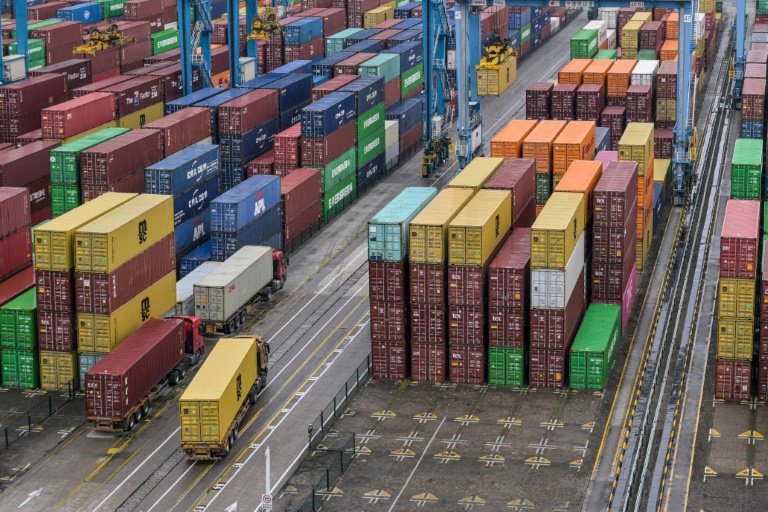Top Stories
Trump’s Tariff Offensive Disrupts Global Trade Landscape

The recent tariff measures implemented by President Donald Trump are significantly reshaping the global trade environment. As of this week, new tariffs ranging from 10% to 41% are now in effect for 69 countries, coupled with transshipment penalties of 40% and steel tariffs at 50%. This aggressive approach marks the most extensive trade actions by the United States in nearly a century, with the financial burden falling heavily on American households.
According to research from the Budget Lab at Yale University, the average U.S. household is projected to lose approximately $2,400 in purchasing power this year due to increased import prices. Economic forecasts indicate that real GDP growth could decelerate by 0.5 percentage points, potentially resulting in the loss of nearly 497,000 jobs by the end of 2026. Dr. Thomas Ellerman, an international economist at Columbia University, commented, “These are the highest effective tariffs since 1935. While some industries, like domestic steel, may benefit temporarily, the overall cost to consumers and exporters is enormous.”
Impact on North American Neighbors
Although the United States-Mexico-Canada Agreement (USMCA) provides some level of protection, Canada and Mexico are not immune to the consequences of these tariffs. Canada faces tariffs of up to 35%, particularly affecting the aluminum and automotive sectors. Mexico’s economy might contract by 4% if U.S. tariffs remain in place through 2026, according to Al Jazeera.
In South America, Brazil is responding to the imposition of 50% tariffs by filing a complaint with the World Trade Organization. In retaliation, Brazil has introduced new duties on American agricultural products, exacerbating diplomatic tensions amid its recent political turbulence.
Global Repercussions and Economic Uncertainty
India is now facing 25% tariffs, which include sanctions related to its ongoing oil trade with Russia. As a result, Goldman Sachs has revised its growth forecasts for both 2025 and 2026, citing uncertainties linked to U.S. import duties.
Countries in Southeast Asia, such as Vietnam, Thailand, and Indonesia, are also feeling the strain. New regulations against “transshipment” are disrupting supply chains, as these nations often serve as rerouting hubs for goods manufactured in China. Reports indicate that inflation fears and supply chain disruptions are now widespread in the region.
In Europe, although the European Union, the United Kingdom, and Japan have negotiated exemptions for automobiles and pharmaceuticals, many sectors still face tariffs of 15% to 20%. European businesses, particularly in the luxury and automotive markets, are reporting squeezed profit margins, according to the Financial Times.
The political implications of these tariffs are also significant. For the Trump administration, the tariffs serve as a tool for leverage and a means to promote fairer trade practices while aiming to protect U.S. manufacturing. Yet, business leaders express concern over the unpredictability these measures create. One CEO remarked to Politico, “Clarity came—but so did chaos. We’re losing predictability, which is just as bad as losing margin.”
As the 2026 midterm elections approach, the tariffs have become a contentious issue. Republican hardliners advocate for them, while Democrats and some centrist Republican lawmakers caution against the potential economic damage and global instability.
Ultimately, Trump’s tariff strategy represents not just a political maneuver but a fundamental shift in America’s position within the global economy. While certain U.S. industries may see short-term benefits, the impact on consumers and international trade partners is already being felt worldwide.
-

 Lifestyle3 months ago
Lifestyle3 months agoLibraries Challenge Rising E-Book Costs Amid Growing Demand
-

 Sports3 months ago
Sports3 months agoTyreek Hill Responds to Tua Tagovailoa’s Comments on Team Dynamics
-

 Sports3 months ago
Sports3 months agoLiverpool Secures Agreement to Sign Young Striker Will Wright
-

 Lifestyle3 months ago
Lifestyle3 months agoSave Your Split Tomatoes: Expert Tips for Gardeners
-

 Lifestyle3 months ago
Lifestyle3 months agoPrincess Beatrice’s Daughter Athena Joins Siblings at London Parade
-

 World3 months ago
World3 months agoWinter Storms Lash New South Wales with Snow, Flood Risks
-

 Science3 months ago
Science3 months agoTrump Administration Moves to Repeal Key Climate Regulation
-

 Science2 months ago
Science2 months agoSan Francisco Hosts Unique Contest to Identify “Performative Males”
-

 Business3 months ago
Business3 months agoSoFi Technologies Shares Slip 2% Following Insider Stock Sale
-

 Science3 months ago
Science3 months agoNew Tool Reveals Link Between Horse Coat Condition and Parasites
-

 Sports3 months ago
Sports3 months agoElon Musk Sculpture Travels From Utah to Yosemite National Park
-

 Science3 months ago
Science3 months agoNew Study Confirms Humans Transported Stonehenge Bluestones









